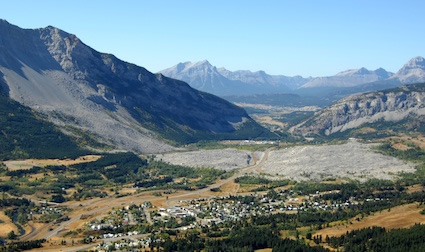Stop, rock and roll
A rock slide once buried a portion of the town of Frank—now these rock fields are home to many critters

One hundred and eight years ago, 90 million tonnes of rock fell from Turtle Mountain, burying a portion of the town of Frank and killing about 70 people. It would go down in history as Canada’s deadliest rock slide.
More than a century later, facts and a few time-resistant myths have combined to create a fascinating story that is brought to light at the Frank Slide Interpretive Centre. There are galleries, educational programs, survivor stories and a monitoring system on Turtle Mountain to predict the next slide.
Meet the mighty pika
The rock fields make for an unusual environment for a variety of critters.
“Most of the rock slides are higher up in the mountains,” said Monica Field, the area manager at the Frank Slide Interpretive Centre. “This particular one brought 30 million cubic tonnes of rock down to the Crowsnest Valley, at a relatively low elevation. ”
The low-lying rock field now provides a home for pikas, golden mantle ground squirrels and several species of spiders. Beyond the rock field, the Crowsnest Valley is a birdwatching hot spot; Field said that as many as 5,000 golden eagles have been seen during the fall migration.
Visitors can take in some of the landscape and wildlife by exploring along the trails that wind in and around the rocks.
“There are walking paths around the integrative centre with some really good interpretive signs, and then you can walk through the rocks on our Frank Slide Trail, which is 1.5 kilometres,” said Field. “We also have a new offering that will be a community walking trail that goes from the Leitch Collieries in the east to Crowsnest Lake in the west. We finished our leg of it last summer, so we now have a beautiful walking trail all along the rim of the slide to the northeast to Bellevue.”






